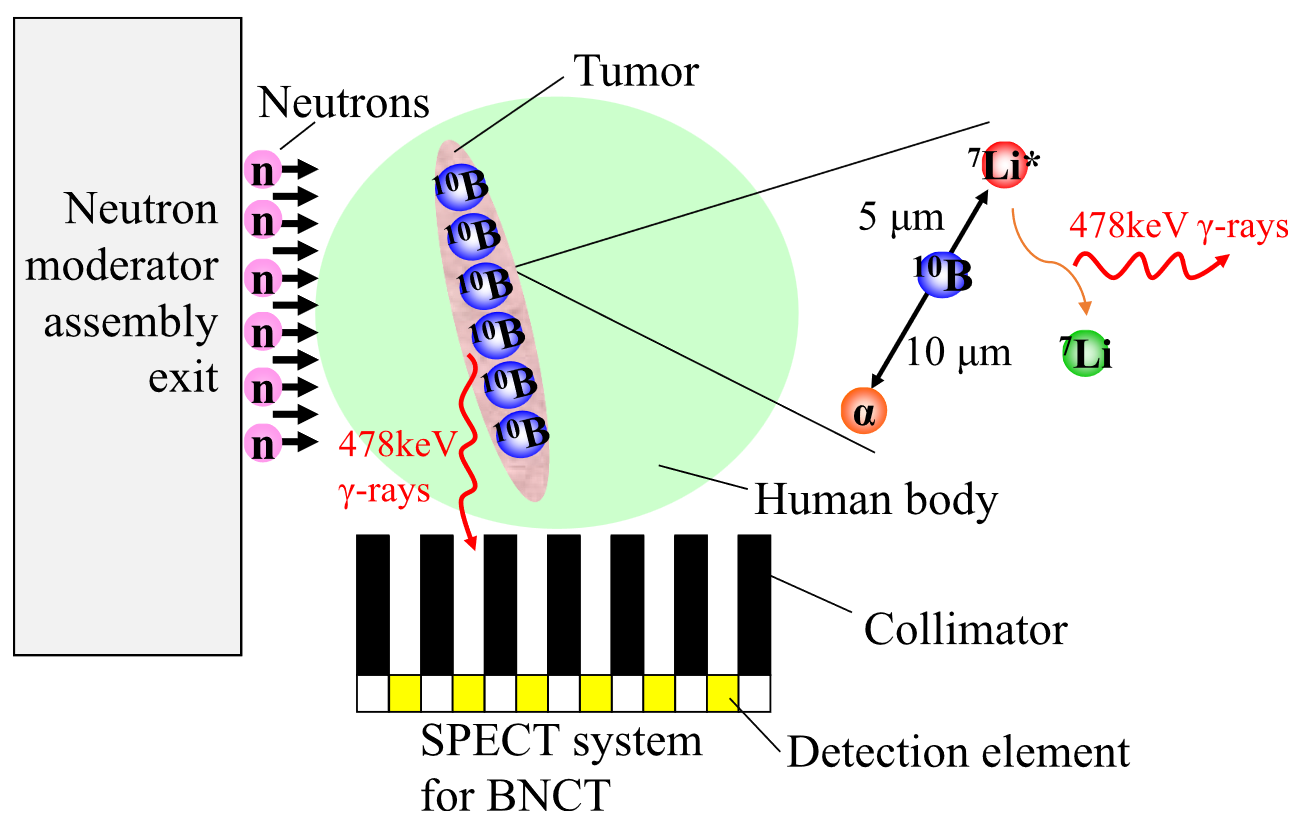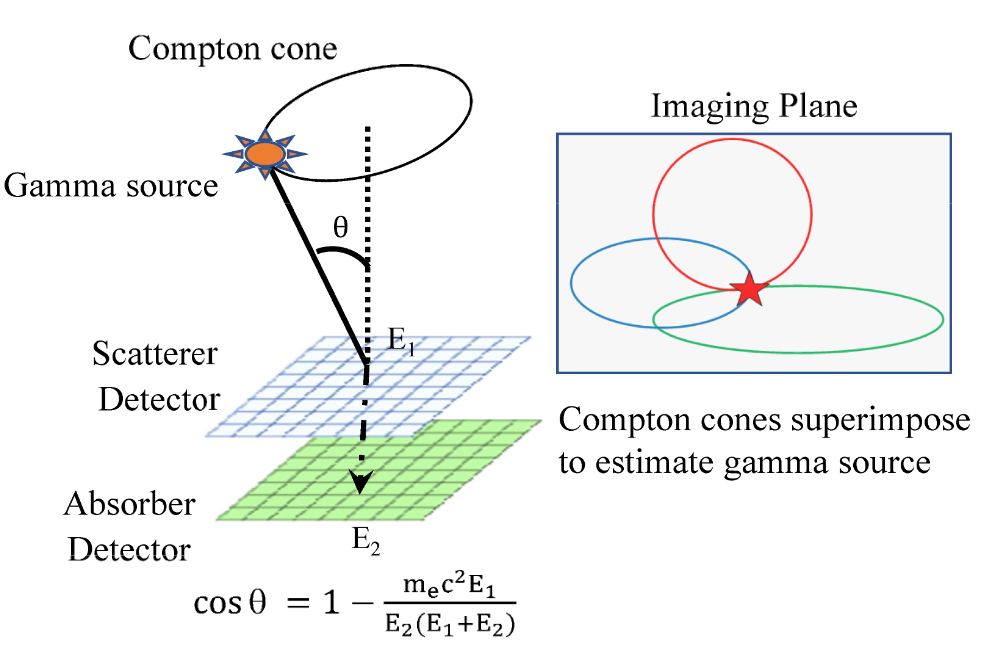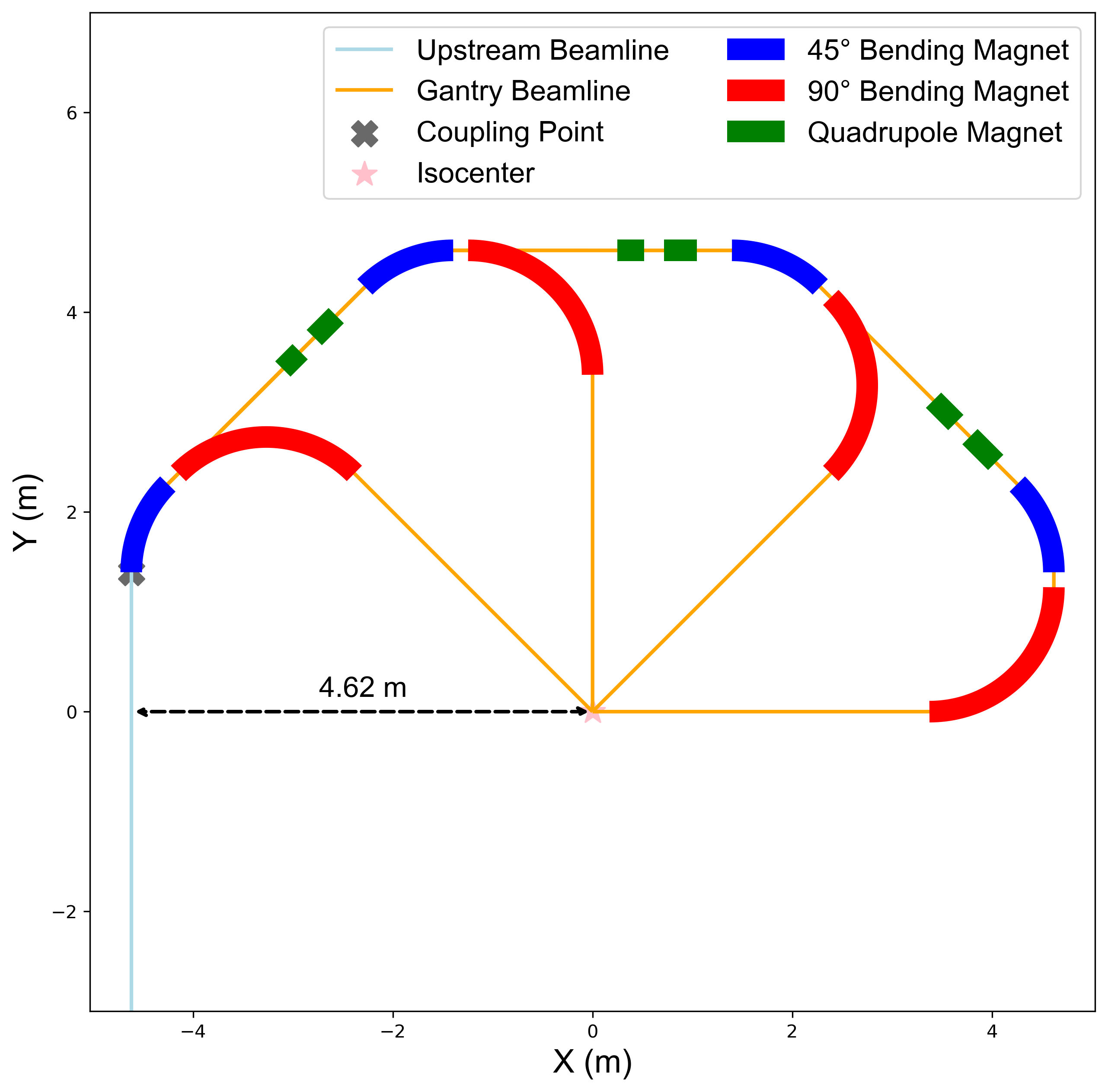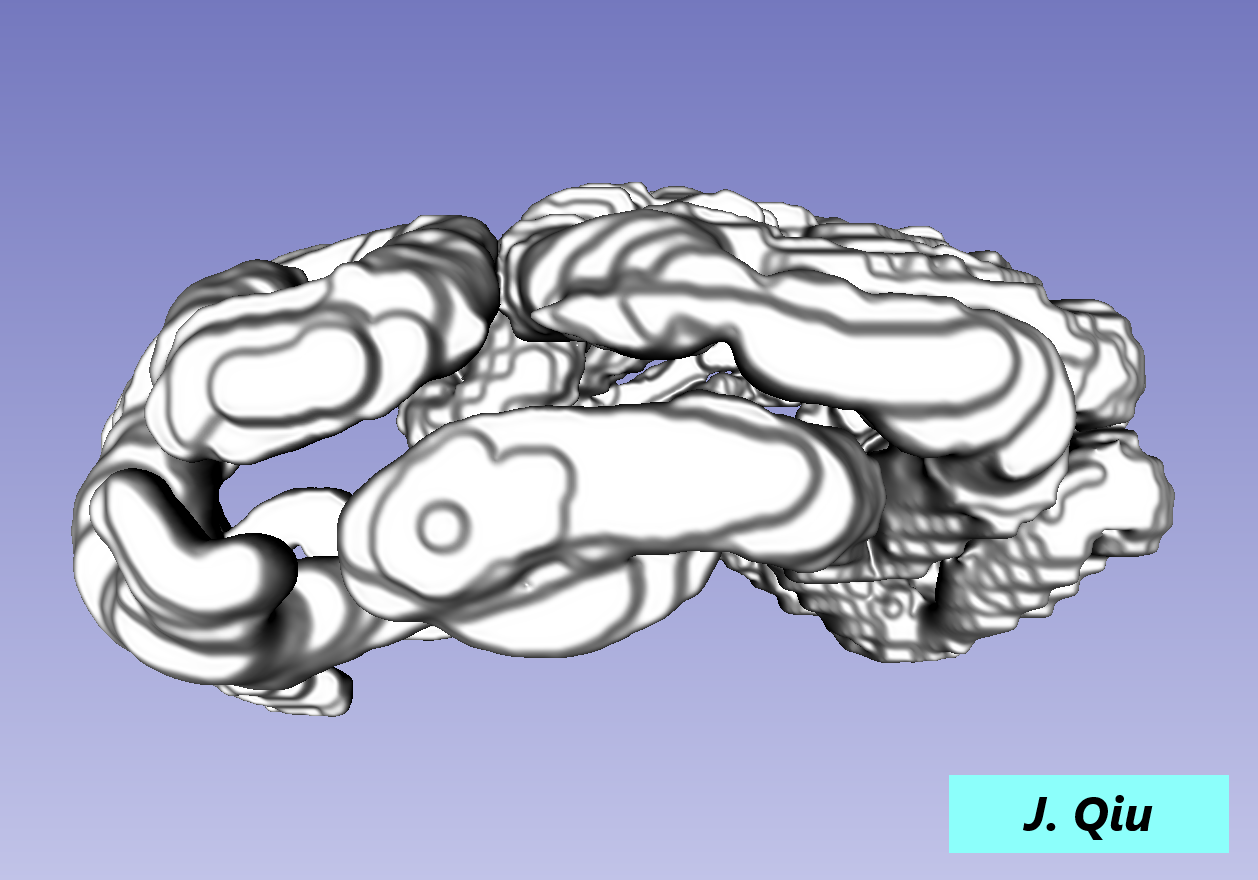About Me
Jiye Qiu (邱 季野 / キュウ キヤ) is a doctoral student studying nuclear science and energy engineering at the Graduate School of Engineering, The University of Osaka. Research focus includes prompt gamma-ray imaging for boron neutron capture therapy, with broader interests in medical physics. Obtained Master of Engineering degree in nuclear science and energy engineering from the University of Osaka in 2024, and Bachelor of Engineering degree in biomedical engineering from the University of Sydney with first class honours in 2021.
Research Keywords: Medical Physics, Radiation Measurement, Particle Therapy, Medical Imaging, Nuclear Medicine Instrumentation, Scintillation Counting, Monte Carlo Simulation, Deep Learning
日本語の履歴と業績はResearchmapにご参照ください。
News
- 2025.06: Made a oral presentation in AFAD2025 (Asian Forum for Accelerators and Detectors).
- 2025.05: Published a first-authored article in Journal of Instrumentation.
- 2025.02: Made a poster presentation in PHITS Workshop at JAEA 2025.
- 2024.10: Published a first-authored article in Radiation Measurements.
- 2024.09: Made a poster presentation in The 10th Japan-Korea Joint Meeting on Medical Physics.
Click to View More
- 2024.03: Selected as a candidate of Honors Program for Graduate Schools in Science, Engineering and Informatics.
- 2022.11: Made a poster presentation in Young Researchers’ BNCT Meeting 2022.
- 2022.04: Started building the homepage.
Educations
- Doctor of Philosophy (Engineering), Sustainable Energy and Environmental Engineering, The University of Osaka, 2024 - 2027
- Nuclear Science and Energy Engineering Course
- Field of Study: Prompt Gamma-ray Imaging for Particle Therapy
- Selected as a Candidate in Fundamental and Astro Physics Research Unit of Honors Program for Graduate Schools in Science, Engineering and Informatics
- Master of Engineering, Sustainable Energy and Environmental Engineering, The University of Osaka, 2022 - 2024
- Nuclear Science and Energy Engineering Course
- Master’s Thesis titled: “Development and Verification of a Real-time Epi-thermal Neutron Absolute Flux Intensity Measurement Technique for Boron Neutron Capture Therapy” (In Japanese)
- Bachelor of Engineering (Honours Class I), Biomedical Engineering, The University of Sydney, 2017 - 2021
- GPA: 3.55/4.00
- Completed a Major in Electrical Engineering
- Achieved High Distinction in the Honours Thesis titled: “Volumetric CT Small Bowel Segmentation using Deep Learning” [Code]
Experience
- Main Employments
- PhD Student, Division of Sustainable Energy and Environmental Engineering, Graduate School of Engineering, The University of Osaka, 2024.04 - Now
- Research Roles
- Research Assistant (Joint Research Project with Toyota Radiation Research Institute), Division of Sustainable Energy and Environmental Engineering, Graduate School of Engineering, The University of Osaka, 2024.10 - Now
- Laboratory Rotation Student, Accelerator Research Division, Research Center for Nuclear Physics, The University of Osaka, 2024.05 - 2024.08
- Research Student, Department of Sustainable Energy and Environmental Engineering, School of Engineering, The University of Osaka, 2021.10 - 2022.03
- Internships and Part-time Roles
- Medical Physics Assistant (Part-time), Department of Medical Physics, Osaka Heavy Ion Therapy Center, 2024.04 - 2025.03
Publications
- Journal Articles
- Jiye Qiu*, Mitsuhiro Fukuda*, Shotaro Matsui, Isao Murata, “Conceptual investigation of a static gantry system with multiple irradiation angles for carbon-ion radiotherapy: optimization strategy of beam optics”, Journal of Instrumentation, vol. 20, no. 5, p. P05012, May 2025. doi: 10.1088/1748-0221/20/05/P05012
- Jiye Qiu, Daisuke Hatano, Yulin Ge, Nikolaos Voulgaris, Kohei Sagara, Zhaopeng Qiao, Shingo Tamaki, Sachie Kusaka, Takushi Takata, Isao Murata*, “Preliminary study of a compact epithermal neutron absolute flux intensity measurement system for real-time in-vivo dose monitoring in boron neutron capture therapy”, Radiation Measurements, vol. 178, p. 107308, Nov. 2024. doi: 10.1016/j.radmeas.2024.107308 Preliminary study of a compact epithermal neutron absolute flux intensity measurement system for real-time in-vivo dose monitoring in boron neutron capture therapy
First Author, Corresponding Author*
Presentations
- International Conferences
- J. Qiu, M. Fukuda, S. Matsui, “Ion Optical Design Technique of a Static Gantry System for Carbon-ion Radiotherapy using Genetic Algorithm”, AFAD2025 (Asian Forum for Accelerators and Detectors), Aobayama Campus, Tohoku University, Japan, June 2025. (Oral)
- J. Qiu, M. Sakai, N. Voulgaris, S. Tamaki, S. Kusaka, I. Murata, “Design of Si-TlBr Compton Camera Geometry using PHITS for Measuring Prompt Gamma-rays in BNCT”, PHITS Workshop at JAEA 2025, JAEA Tokai Mirai Base, Japan, February 2025. (Poster)
- J. Qiu, Y. Ge, N. Voulgaris, K. Sagara, D. Hatano, S. Tamaki, S. Kusaka, T. Takata, I. Murata, “Experimental Investigation of a Compact Epi-thermal Neutron Flux Measurement System for Real-time Beam Monitoring in BNCT”, The 10th Japan-Korea Joint Meeting on Medical Physics, Nagoya Congress Center, Japan, September 2024. (Poster)
- J. Qiu, D. Hatano, S. Tamaki, S. Kusaka, I. Murata, “Design Study of Real‑time Absolute Epi‑thermal Neutron Flux Intensity Monitor using Scintillation Detectors”, Young Researchers’ BNCT Meeting 2022 (YBNCT‑2022), Virtual Meeting, November 2022. (Poster) [Certificate]
- Domestic Conferences
- J. Qiu, M. Fukuda, S. Matsui, I. Murata, “Beam Optics Design of a Compact Static Gantry System for Fixed Multi-angle Heavy-ion Irradiation”, The 4th Meeting of Japanese Society for Quantum Medical Science, National Institute of Radiological Sciences, National Institutes for Quantum Science and Technology, Japan, December 2024. (Poster) (In Japanese)
- J. Qiu, Y. Ge, N. Voulgaris, K. Sagara, D. Hatano, S. Tamaki, S. Kusaka, T. Takata, I. Murata, “Experimental Verification of a Real-time Epi-thermal Neutron Absolute Flux Intensity Measurement Technique using BNCT Therapeutic Neutron Field”, 38th Workshop on Radiation Detectors and Their Uses, Tsukuba Campus, High Energy Accelerator Research Organization (KEK), Japan, January 2024. (Oral) (In Japanese)
- J. Qiu, Y. Ge, D. Hatano, Z. Qiao, S. Tamaki, S. Kusaka, I. Murata, “Experimental Study and Characterization of Neutron Scintillators containing Li-6 and B-10 for Neutron Detection in BNCT”, The 19th Congress on Neutron Capture Therapy, Yokohama Symposia, Japan, July 2023. (Oral) (In Japanese)
- Seminars and Talks
- J. Qiu, “Establishment of a Novel Compton Camera for Dosimetry Application in Boron Neutron Capture Therapy”, 2025 Mixing Presentation A, Next Generation Researcher Development Project, Online, June 2025. (In Japanese)
- J. Qiu, “Beam Transport Study of a Compact Multi-angle Irradiation System for Heavy-ion Radiotherapy”, 2024 Joint Seminar on Laboratory Rotation and Internship, Honors Program for Graduate Schools in Science, Engineering and Informatics, Suita Campus, The University of Osaka, Japan, December 2024. (In Japanese)
Presenter
Achievements
- Honors and Awards
- Bonus Research Expenses (The University of Osaka Next Generation Researcher Development Project), 2025 Mixing Presentation Session Chair, Institute for Transdisciplinary Graduate Degree Programs, The University of Osaka, 2025.07
- Travel Support, PHITS Workshop at JAEA 2025, Japan Atomic Energy Agency, 2025.02
- Faculty of Engineering Honours Recipient (Honours Class I), The University of Sydney, 2021.09 [URL]
- Scholarships and Fellowships
- Honors Program for Graduate Schools in Science, Engineering and Informatics (Fundamental and Astro Physics Research Unit), The University of Osaka, 2024.04 - 2027.03 [URL]
- Grants
- Jiye Qiu, “Establishment of a Novel Compton Camera for Dosimetry Application in Boron Neutron Capture Therapy”, Research Expenses (The University of Osaka Next Generation Researcher Development Project), Support for Pioneering Research Initiated by the Next Generation, Japan Science and Technology Agency, 2024.04 - 2027.03 (Grant Number JPMJSP2138)
Main Recipient
Projects

- Monte Carlo Study and Image Reconstruction of a prototype SPECT using GAGG scintillators for Boron Neutron Capture Therapy
- 2024.10 - Now
- Division of Sustainable Energy and Environmental Engineering, Graduate School of Engineering, The University of Osaka / Toyota Radiation Research Institute
- Description: In boron neutron capture therapy (BNCT), the real-time measurement of local boron dose is required. To address this problem, the measurement of 478 keV prompt gamma-rays from boron neutron capture reactions has been proposed. Recently, A prototype BNCT-SPECT using GAGG scintillators has been fabricated. Thus, we are conducting Monte Carlo study and image reconstruction specialized for this prototype BNCT-SPECT, before performing experimental evaluation using therapeutic neutron beam.

- Establishment of a Novel Compton Camera for Dosimetry Application in Boron Neutron Capture Therapy
- 2024.04 - Now
- Division of Sustainable Energy and Environmental Engineering, Graduate School of Engineering, The University of Osaka
- Description: In boron neutron capture therapy (BNCT), it is necessary to know the difficult-to-determine boron concentration and neutron fluence for in-vivo dose evaluation. To address this problem, the measurement of 478 keV prompt gamma-rays from boron neutron capture reactions has been proposed. Compton cameras utilize incident gamma-rays which are Compton scattered in a scatterer detector followed by their photoelectric absorption by an absorber detector. Thus, we are developing a novel compton camera that can measure the 478 keV prompt gamma-rays precisely in high intensity neutron irradiation field for clinical BNCT.

- Conceptual Design of a Compact Static Gantry System with Multi-angle Irradiation for Carbon-ion Radiotherapy
- 2024.05 - 2024.10
- Accelerator Research Division, Research Center for Nuclear Physics, The University of Osaka
- Description: Due to the high magnetic rigidity of carbon ions, transporting therapeutic carbon-ion beams with high angular flexibility is more challenging than with lighter ions, such as protons. Recently, irradiation of carbon ions with flexible angular selections has been achieved through rotating gantry systems, but these require large mechanical frames to house a series of beam transport elements for rotation around the treatment couch. A static beam delivery system compatible with multiple irradiation angles is a promising alternative to the rotating gantry system, offering potential for miniaturization and cost reduction of carbon-ion radiotherapy facilities. This study proposes a compact static gantry system concept, using electromagnets arranged in a circular configuration around the treatment couch to enable multiple angular irradiations of therapeutic carbon-ion beams.

- Development of Real-time Absolute Epi-thermal Neutron Flux Intensity Monitor for Boron Neutron Capture Therapy
- 2021.10 - 2024.03
- Division of Sustainable Energy and Environmental Engineering, Graduate School of Engineering, The University of Osaka
- Description: In boron neutron capture therapy (BNCT), epi-thermal neutron irradiation is carried out to treat deep-seated cancers, as epi-thermal neutrons can be slowed down in a human body and converted into thermal neutrons before reaching the tumor. Since the number of irradiated epi-thermal neutrons determines the therapeutic effect, it is significantly required to measure the epi-thermal neutron intensity during the irradiation. Thus, we have been developing a novel monitor to measure the absolute epi-thermal neutron flux intensity on the body surface of a patient in real-time during BNCT treatment.

- Automated CT-based Modeling for the Localization and Characterization of Obstruction in Small Bowel Obstruction
- 2020.08 - 2021.06
- School of Biomedical Engineering, Faculty of Engineering, The University of Sydney
- Description: Small bowel obstruction is an abdominal disorder diagnosed using CT imaging. Image-based diagnosis is a complex task requiring a clinician to navigate through a stack of 2D slices representing the tortuous 3D small bowel. Our goal is to simplify this task by segmenting the bowel and generating high quality 3D models. 3D deep neural networks have the potential to perform segmentation efficiently and accurately. This research project focuses on investigating efficient ways to generate labelled segmentation data and developing a deep learning model based on 3D convolutional neural network to perform volumetric segmentation of small bowel from CT data.
Teaching Experience
- Teaching Assistant
- Exercise II in Energy Engineering (School of Engineering, The University of Osaka), 2023
Professional Activities
- Session Chair, Mixing Presentation A (The University of Osaka Next Generation Researcher Development Project), 2025
- Supporter, Public open of the Strong 14 MeV neutron engineering experimental device “OKTAVIAN” (The University of Osaka Icho Festival), 2023-2025
- Student Research Mentor, Exercise II in Energy Engineering (School of Engineering, The University of Osaka), 2022-2024
Certifications and Licenses
- Professional Qualifications
- Japanese-Language Proficiency Certificate N1, The Japan Foundation, 2021.08 [Certification No. N1A430621A]
- Japanese-Language Proficiency Certificate N2, The Japan Foundation, 2019.08 [Certification No. N2A510830A]
- Graduate Program for Advanced Interdisciplinary Studies (The University of Osaka)
- Training Certifications
- Geant4 Training Course in Medicine 2023, The High Energy Accelerator Research Organization (KEK), 2023.09 [Image]
- International Training Course on Carbon-ion Radiotherapy, Association for Nuclear Technology in Medicine, 2022.12 [Image]
- Management and Measurement Course for Radiation Protection, National Institutes for Quantum Science and Technology, 2022.09 [Image]
- Coursera Online Courses: Programming in C++: A Hands-on Introduction [URL], Deep Learning [URL]
Professional Memberships
- American Association of Physicists in Medicine (Associate-Student Member), 2024 - Now
- European Federation of Organisations for Medical Physics (Individual Associate Member), 2024 - Now
- Institute of Electrical and Electronics Engineers (Graduate Student Member), 2024 - Now
- IEEE Engineering in Medicine and Biology Society (Graduate Student Member), 2024 - Now
- IEEE Nuclear and Plasma Sciences Society (Graduate Student Member), 2024 - Now
- Particle Therapy Co-Operative Group (Registrated Member), 2024 - Now
- Japan Society of Medical Physics (Student Member), 2024 - Now
- Japanese Society for Quantum Medical Science (Student Member), 2024 - Now
- The Japanese College of Medical Physics (Student Member), 2024 - Now
- The Japan Society of Applied Physics (Graduate Student Member), 2024 - Now
- JSAP Ionizing Radiation Division (Graduate Student Member), 2024 - Now
- The University of Osaka Engineering Society (Life Member), 2024 - Now
Skills
- Languages: Chinese (Native), Japanese (Fluent), English (Proficient)
- Coding and Programming: Python, MATLAB, C++, Java, HTML, LaTeX
- Simulation and Modeling: PHITS, Geant4, MAD-X, Opera-3D
- Medical Image Processing: 3D Slicer, ITK
- Radiotherapy Treatment Planning: RayStation, VQA
- Laboratory Skills: Radiation Detectors, Oscilloscope, Spectrum Analysis (DppMCA)
Access Information
Division of Sustainable Energy and Environmental Engineering, Graduate School of Engineering, The University of Osaka
2-1 Yamadaoka, Suita, Osaka 565-0871, Japan